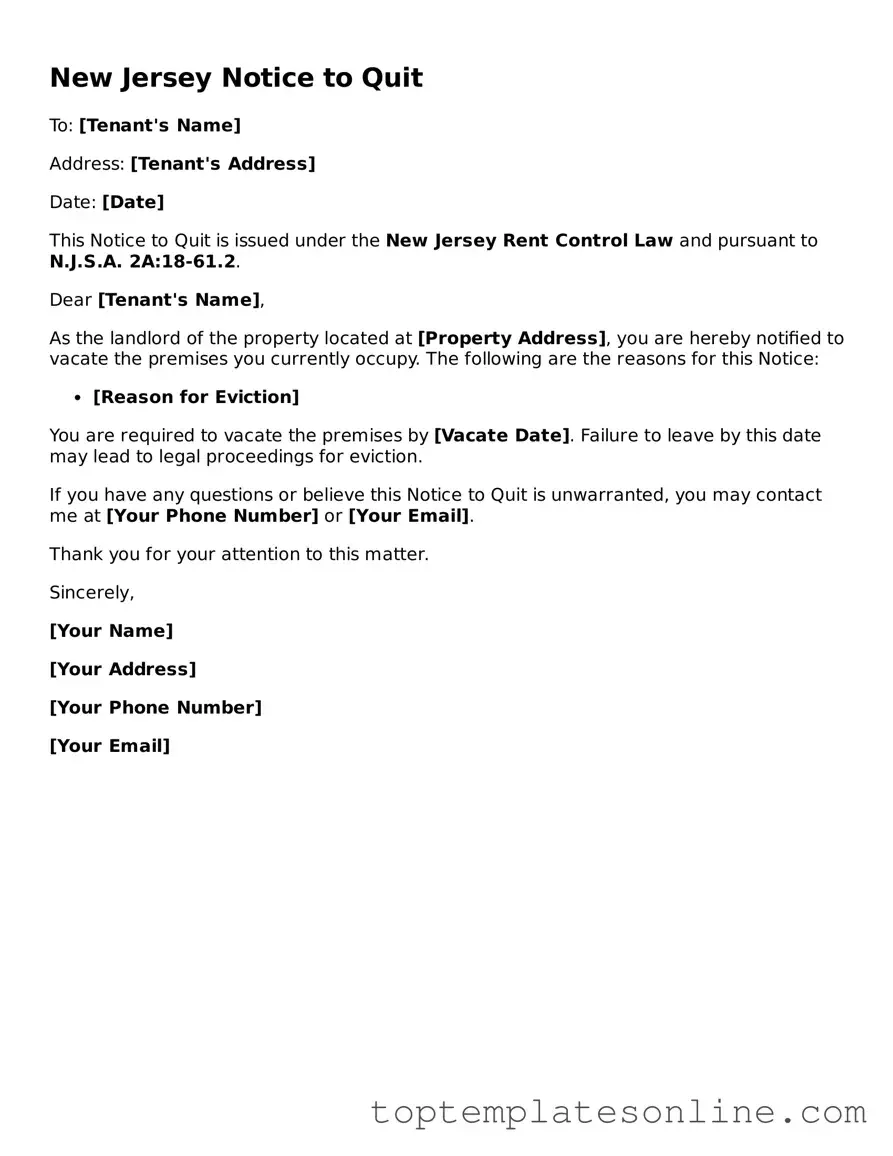Blank Notice to Quit Template for New Jersey State
The New Jersey Notice to Quit form is a legal document used by landlords to formally notify tenants of their intent to terminate a lease agreement. This notice outlines the reasons for termination and provides a timeline for the tenant to vacate the premises. Understanding this form is essential for both landlords and tenants to ensure compliance with state rental laws.
Customize Notice to Quit Here
